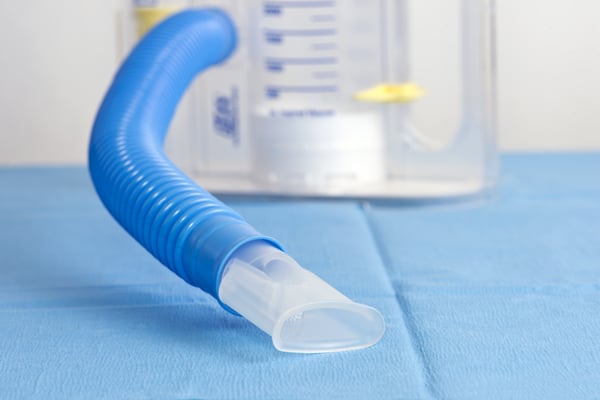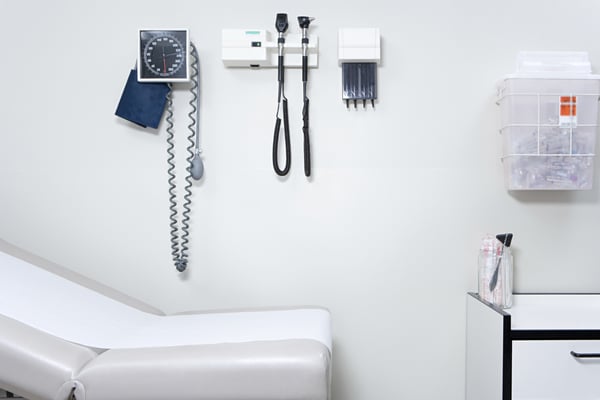
The GOLD criteria, or Global Initiative for Chronic Obstructive Lung Disease (GOLD) criteria, is used for patients and doctors to classify the severity of airflow limitations for those with COPD and similar lung diseases.
This helps categorize how severe the case of disease is and can help medical professionals determine a path for treatment.
Medical professionals use these criteria to better diagnose a patient and monitor any progression of the disease.
What Lung Diseases Can Be Measured by GOLD?
Common lung diseases such as COPD, asthma, congestive heart failure, bronchiectasis, tuberculosis, obliterative bronchiolitis, and diffuse panbronchiolitis can all be monitored and diagnosed by the GOLD criteria.
What is FEV1/FVC?
FEV1, or forced expiratory volume in one second, is used to measure the amount of air you can exhale in a second.
FEV1 is the amount of air you can forcefully exhale in a second, and it helps you and your doctor measure where your health is it.
Your medical team can use your FEV1 results to continually measure and monitor your rates and see if there is progression of the disease or if you are at the same level.
FEV1 is often based off of a standard healthy person, with age, race, height and gender.
FEV1 helps your doctor determine the stage of COPD you may be at and other possible lung diseases can be diagnosed or monitored by FEV1.
FVC, or forced vital capacity, is also a measuring tool for breathing, but it measures the amount of air that one person can forcefully exhale after taking a deep breath.
FVC is one of the most vital tests to diagnose and determine more about a possible lung disease, such as COPD or asthma.
The average amount of air expelled during this test is around 3 liters but can change based on factors of the individual (such as height and weight).
Both of these measurements can be used for a ratio that will help your doctor determine what type pf lung disease you may have.

How Are You Assessed?
The GOLD criteria help your doctor assess the severity of your condition and then determine what the best method of treatment for you.
The stages of GOLD are:
GOLD 1 (mild): FEV1 ≥ 80% predicted
GOLD 2 (moderate): 50% ≤ FEV1 < 80% predicted
GOLD 3 (severe): 30% ≤ FEV1 < 50% predicted
GOLD 4 (very severe): FEV1 < 30% predicted
These are then divided into groups of risk, and severity of symptoms:
Group A: low risk, 0-1 exacerbations a year, no hospitalizations required, few symptoms
Group B: low risk, 0-1 exacerbations a year, no hospitalizations required, more symptoms than Group A.
Group C: high risk, 2 or more exacerbations a year, one or more hospitalizations, few symptoms
Group D: high risk, 2 or more exacerbations a year, one or more hospitalizations, more symptoms than Group C.
How is it Measured?
The FEV1 and FVC levels are measured by a test, called pulmonary function test, which is noninvasive way to determine how well your lungs are working.
A doctor uses a spirometer, to measure the amount of air you inhale, as well as how quickly you can exhale and how much air you can exhale.
A spirometer is used to assess and diagnose a lung condition, such as COPD, pulmonary fibrosis and asthma.
It is also used to keep track of a lung disease, by monitoring any progression in the disease and can help determine if the path of treatment is helping or not.
Pharmaceutical companies also use spirometers to measure the results of a medication on individuals to help determine if the medication is working.
How is it Used?
When you go into the medical facility, you can expect a nurse, technician or doctor to give you instructions on the test and explain what they will need you to do.
If there is any confusion make sure to ask questions and get a clear understanding of what is needed from you.
You will most likely be sitting during the test, and a clip will be put over your nose, so your breathing will only be through your mouth.
You will also be required to breathe in a deep breath and breathe out as hard as you can, but make sure your mouth is secure around the tube so there are no leaks.
This test will be done roughly three times to compare results and deem if there is consistency and accuracy in the results.
You may also be given medication (bronchodilator) after the first rounds of tests, to compare if the medication has any improvement on your breathing.
The entire process takes a total of fifteen minutes and is minimally invasive.

Conclusion:
The GOLD criteria is used to help doctors and medical professionals diagnose any lung conditions or issues.
It uses FEV1 to measure the amount of air you can expel in one second to see how well the lungs are working.
A spirometer can help keep your lung disease on track and avoid any progression of the disease, it can be something you measure at home or your doctor does when you go in for appointments.
The GOLD criteria can be a vital part of a COPD patients day to day life and help track the progression of the disease.



